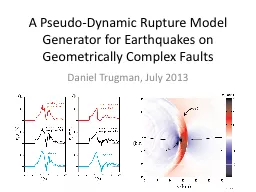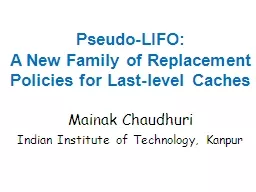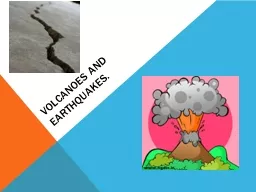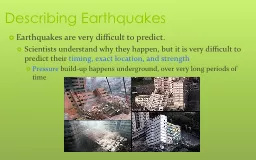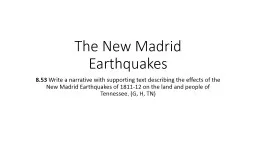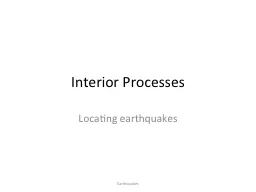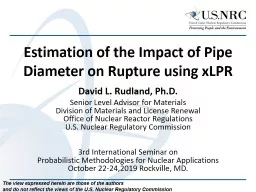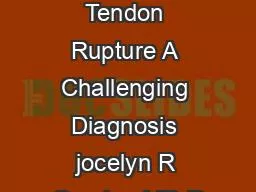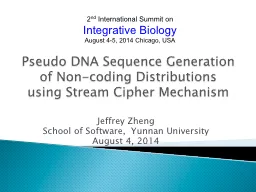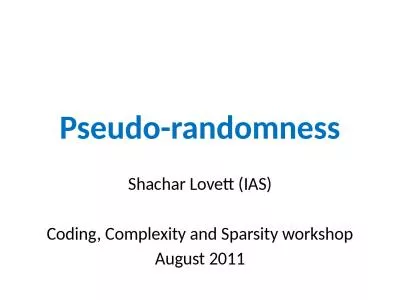PPT-A Pseudo-Dynamic Rupture Model Generator for Earthquakes on
Author : giovanna-bartolotta | Published Date : 2016-04-26
Daniel Trugman July 2013 2D RoughFault Dynamic Simulations Homogenous background stress complex fault geometry heterogeneity in tractions Eliminates important
Presentation Embed Code
Download Presentation
Download Presentation The PPT/PDF document "A Pseudo-Dynamic Rupture Model Generator..." is the property of its rightful owner. Permission is granted to download and print the materials on this website for personal, non-commercial use only, and to display it on your personal computer provided you do not modify the materials and that you retain all copyright notices contained in the materials. By downloading content from our website, you accept the terms of this agreement.
A Pseudo-Dynamic Rupture Model Generator for Earthquakes on: Transcript
Download Rules Of Document
"A Pseudo-Dynamic Rupture Model Generator for Earthquakes on"The content belongs to its owner. You may download and print it for personal use, without modification, and keep all copyright notices. By downloading, you agree to these terms.
Related Documents

